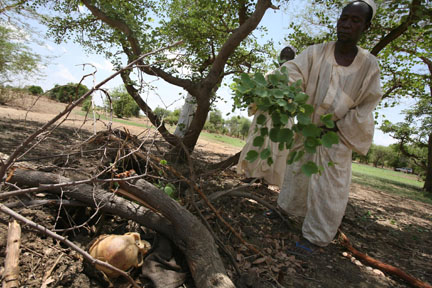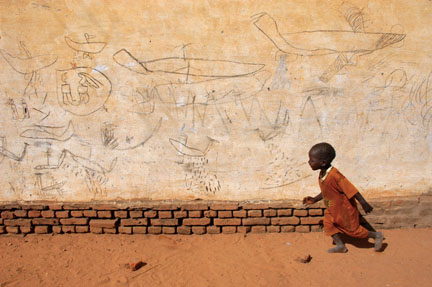Darfur: The War Since the “Firestorm” of 2003–2004
The nature of the conflict in Darfur has changed dramatically since Hanis first read about it in 2003. As Julie Flint and Alex de Waal write in their book Darfur: A New History of a Long War (Zed Books, 2008), the first two years of the conflict were “firestorm” years. During this time, Janjawiid militias, composed of disaffected Darfur Arab tribes fueled by an Arab-supremacist ideology, raided the villages of African tribes with the help of government military intelligence and the air force.
Though the African tribes in Darfur are Muslim, the Arab tribes traditionally live nomadic lifestyles as animal herders, and they migrate during the year through land occupied by the African tribes. The government and the Janjawiid targeted civilians of these tribes as potential supporters of rebel groups that were fighting the government. The attacks eliminated the possibility of living in these villages.
The raids displaced millions of civilians and led to long treks to displacement camps, during which refugees were in danger of further attacks in addition to suffering from hunger, thirst, and lack of medical care. At the internally displaced persons (IDP) camps, the government used bureaucratic means to impede foreign aid, and Janjawiid prevented the IDPs from collecting food or firewood. An estimated 200,000 civilians were killed in 2003–2004.

The Darfur disaster inspired Hanis and others to organize against genocide while they were students. Chadian inhabitants from Djawara village (above) cover the remains of villagers who were killed during an attack perpetrated by Janjawiid in April 2006. More than 100 men were murdered and thousands of cattle stolen.
The photographs within the story In the Face of Genocide by Hélène Caux depict some of the results of these attacks. This photo (right) of Chadian inhabitants from Djawara village cover the remains of villagers who were killed during an attack perpetrated by Janjawiid in April 2006. More than 100 men were murdered and thousands of cattle stolen. In 2004, internally displaced children in the Abu Zar camp drew what was happening in their daily lives on the wall of one of the school buildings. This drawing depicts United Nations World Food Programme planes air-dropping food near the school.
According to Hanis, the U.S. government currently leads the international community in humanitarian assistance and peacekeeping. Such unprecedented response is undoubtedly due to the public pressure GI-NET and other humanitarian agencies have been able to incite. Yet at least 2.5 million Darfurian civilians remain displaced and the cumulative death toll is estimated to be between 300,000 and 400,000. Peace agreements and ceasefires have consistently failed or been broken by both the rebels and the government.

In 2004, internally displaced children in the Abu Zar camp drew what was happening in their daily lives on the wall of one of the school buildings. This drawing depicts United Nations World Food Programme planes air-dropping food near the school.
Though the United Nations (UN) traditionally does not send in a peacekeeping force until a peace agreement has been established, a UN-led hybrid force in conjunction with the African Union was authorized in July 2007. Despite an authorized force of 26,000 peacekeepers, as of May, the force has only reached 16,000 due to bureaucratic difficulties.
In March, the International Criminal Court issued an arrest warrant for President Omar al-Bashir. He responded by expelling all of the humanitarian aid agencies operating in the country. Aid is slowly being restored but has yet to reach its previous level of operations.
 Email This Page
Email This Page